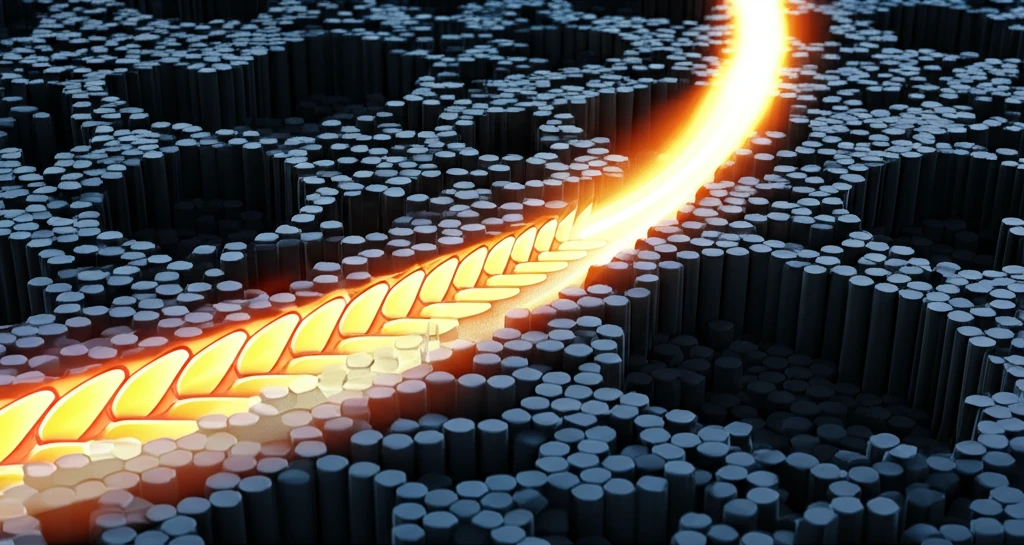
Unlocking the Secrets of Grain Boundaries: How Curvature Affects Material Migration
"New research sheds light on the critical role of curvature in grain boundary migration, offering insights into material behavior and potential innovations in material science."
Grain boundaries, those interfaces between individual crystals within a solid material, have long been recognized as critical players in determining a material's overall properties. The way these boundaries move and evolve—a process known as grain boundary migration—influences everything from a material’s strength and ductility to its resistance to corrosion and fatigue. For decades, scientists have strived to understand the fundamental mechanisms governing this migration, seeking to unlock the secrets that could lead to stronger, more durable, and more adaptable materials.
One of the key factors influencing grain boundary migration is curvature. Imagine a boundary line that isn't perfectly straight but gently curved. This curvature introduces forces and energies that drive the boundary to move, reshaping the grains and, consequently, altering the material's microstructure. Understanding how curvature affects this migration is not merely an academic exercise; it has profound implications for various technological applications. From designing advanced alloys for aerospace to optimizing the performance of semiconductors, controlling grain boundary migration through curvature manipulation could revolutionize material design.
Recent research has delved into the intricate relationship between curvature and grain boundary migration, providing new insights into the underlying physics and mechanics. This article explores the key findings of this research, simplifying the complex concepts and highlighting the potential impact on various industries. Whether you're a material scientist, an engineer, or simply curious about the world around you, this exploration will offer a fascinating glimpse into the dynamic world of grain boundaries and the crucial role of curvature in shaping the materials of tomorrow.
The Mechanics of Migration: Understanding the Forces at Play

The study begins by addressing the fundamental continuity constraints on plastic distortion and distortion rate tensors across surfaces of discontinuity. In simpler terms, it looks at how the deformation of a material changes as it crosses a grain boundary. The researchers emphasize that the Burgers vector—a measure of the lattice distortion caused by dislocations—must be conserved across these interfaces. This conservation principle leads to specific conditions on how the plastic distortion and distortion rate tensors behave, ensuring that the material remains continuous even at the boundary.
- The importance of Burgers vector conservation in understanding grain boundary behavior.
- The role of interface rotation in accommodating plastic deformation.
- The development of mobility laws based on thermodynamic principles.
Implications and Future Directions
This research opens up exciting possibilities for controlling material properties through manipulation of grain boundary curvature. By understanding the relationship between curvature, dislocation dynamics, and interface mobility, scientists and engineers can design materials with tailored properties for specific applications. For example, in the aerospace industry, this knowledge could be used to create alloys that are more resistant to fatigue and creep at high temperatures. In the semiconductor industry, it could lead to new methods for controlling the growth of thin films with enhanced electronic properties. As researchers continue to explore the complexities of grain boundary migration, we can expect even more groundbreaking discoveries that will revolutionize the field of material science and engineering.
